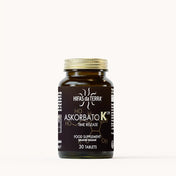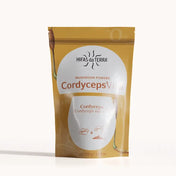The Alzheimer's disease (EA) It is the most frequent cause of dementia in the elderly, a degenerative disorder whose causes are not known in depth and for which There is no treatment. The Alzheimer's causes the gradual loss of brain neurons, which means, as the disease progresses, a strong impact on the autonomy of the patient and its quality of life, with implications and repercussions at the cognitive, functional and behavioral level.
In Spain, memory alterations and suspicion of cognitive impairment are already the first cause of neurological consultation in over 65 years, although the Spanish Society of Neurology (Sen) Calculate that eNTRE 30 and 40% of Alzheimer's cases could be without diagnosing.
According to forecasts, in the coming years the incidence of the disease will increase. Due to the progressive aging of the population and the increase in patient life expectancy, it is estimated that In 2050, there could be more than 1 million affected people By Alzheimer's in Spain.
Why does Alzheimer's occur?
It is known that in its appearance genetics intervenes and other factors such as carrying a little balanced diet, having a low antioxidant intake, exercising little, etc. They also influence illiteracy and poor social life and/or intellectual activity.
According to data from the Spanish Confederation of Associations of relatives of people with Alzheimer's and other dementias (CEAFA), the average cost of the disease is about € 30,000.
EA also involves a huge socio -health load: an EA patient needs, on average, about 70 hours of care. In addition, in most cases (80%), those responsible for patient care are usually relatives, because 70% of those who suffer from EA live in their homes. Thus, the impact of this disease extends to millions of family, friends and caregivers.
The Pathophysiology of EA is still unknown. Molecular studies have revealed various genetic mechanisms that have joined oxidative and toxic theories. This has noted the possibilities of finding biological markers that allow an early diagnosis of the disease (Barabash, 2009) and etiological treatment.
Neuronal connections
In a degenerative illness such as Alzheimer's, thousands of neurons are destroyed and the circuits are disconnected between them making it impossible to perform the functions entrusted. To prevent that in natural circumstances, in the absence of injury or illness, cell death occurs, neurons are endowed with self -realization mechanisms and constant self -realization.
Chemical substances called neurotrophins either nervous growth factors (Nerve Growth Factor, NGF) that are synthesized in specialized neurons, they are the mediators of the process. Neurogenesis occurs in various areas of the brain, both naturally and in response to different injuries, and in recent years the interest in finding has increased How to promote neurogenesis artificially, acting on genes, proteins and trophic factors that regulate it.
Regeneration
In relation to the recent discovery related to neurogenesis, the fungus Hericium Erinaceus - popularly known as León's hair - has proven to be the most efficient fungus in neuronal renewal due to its precursor activity in the nervous growth factor - Nerve Growth Factor (NGF) - thanks to the herithenones (A, B, C, D and E) and the Erinacins present in their composition.
Fungus compounds Hericium Erinaceus They are able to cross the blood brain barrier, being able, therefore, to move from the bloodstream to the central nervous system where they carry out their activity on cognitive deterioration.
Several studies have shown that an NGF deficit is associated with Alzheimer's disease and dementia since, precisely, the growth factor has an essential role in the differentiation and survival of certain types of central nervous system cells and the peripheral nervous system.

Antioxidant and anti -inflammatory capacity
He Reishi (Ganoderma lucidum) It is another fungus to take into account in the health of the brain. Reishi is the antiseen fungus par excellence. Its high antioxidant capacity It helps to reduce harmful concentrations of free radicals, as well as to control the inflammatory responses of the immune system.
Inflammation plays an important role in the amyloid waterfall. For this reason in the approach of the EA, it is also recommended to complement the Reishi treatment, since its anti -inflammatory effects They are very beneficial to combat alzheimerization phenomena.
















